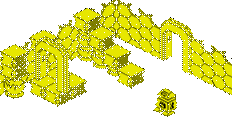Cambridge Z88
Vital Statistics
Introduced
1987 |
|
![]()
What's it like today?
|
The Cambridge Z88 was launched at the Which? Computer Show in London on 17th February 1987 by Sir Clive Sinclair under his new company, Cambridge Computers Ltd (he was unable to sell it under the Sinclair name, having sold his rights to Alan Sugar's Amstrad in 1986). The new portable computer's design stemmed from an earlier prototype called 'Pandora'.
The Z88 was one of the first useful computers to be truly portable, and not simply "luggable". Weighing in at just 900g, the A4-sized computer boasts a full-sized rubber-key keyboard, a large adjustable LCD display and is expandable by the addition of up to three RAM, ROM or EPROM cards - as much as 3 Mbytes can be stored). The most impressive feature of the Z88 is probably the elegant design of its operating system. It's task-switching capability allows any application in use to be "suspended" whilst another task is carried out. The number of suspended applications is in general only limited by the memory of the machine (expandable from 32K to 3.5Mb).
The operating system, called OZ, is held in a 128 KB ROM chip. It is powered either by four AA batteries that provide up to 20 hours of use, or via a 6.5V mains adapter.
The applications provided with the machine include a diary, VT52 terminal emulator, full version of BBC BASIC and a combined word-processor/spreadsheet package. In addition are a variety of mini-applications for various tasks, known as "popdowns". The design of the Z88 is such that further applications can be provided by third-party suppliers and totally integrated into the system. Whilst containing no conventional storage media other than RAM, the Z88 has a comprehensive filing system. For backup, EPROM and Flash EPROM cards can be inserted in one of the three slots at the front of the unit, and files copied onto them. You could purchase EPROm cards of 32K, 128K or 256K, or a 1 MB Flash EPROM card. Alternatively further RAM cards with capacity of 32K, 128K, 512K or 1 MB could be used.
Alternatively, the Z88 can be connected to a variety of desktop computers, or to any printer for hard copy.
Other peripherals produced for the machine include cassette and floppy disk interfaces, usually connected through the serial port, which also allows connection to any standard modem.











